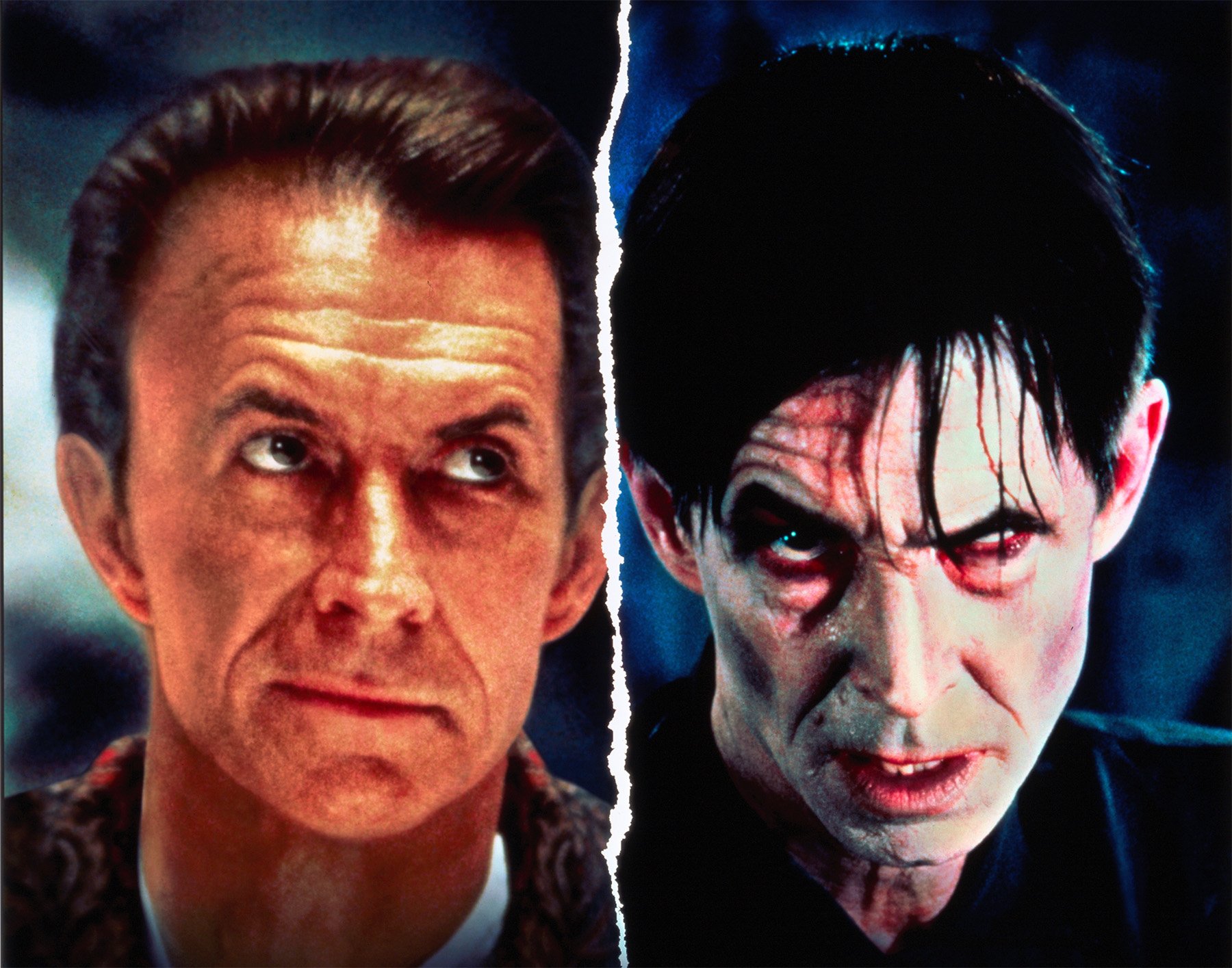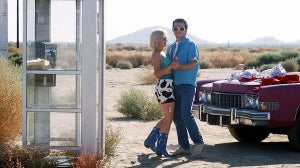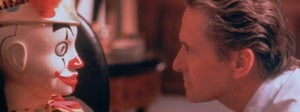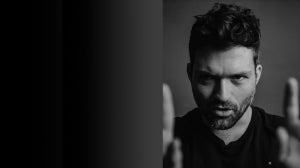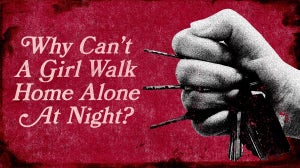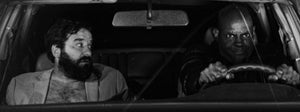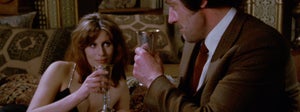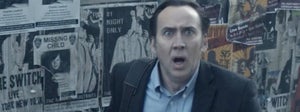
Ask anyone to name the first five cinematic serial killers that come to mind, and Psycho’s Norman Bates is likely to be one of them. Alfred Hitchcock’s iconic film not only changed the landscape of horror cinema but also drastically altered the career path of its standout performer – Anthony Perkins.
Making his big-screen debut in The Actress (1953), Perkins was an up-and-coming star of the 1950s, appearing alongside the likes of Henry Fonda and primed to be part of the next generation of leading men. However, in little over thirty years, Perkins went from the glitz and glam of the Academy Awards to fondling the buttocks of Victorian hookers as the devious Mr Hyde.
Unassuming, charming, and handsome, Perkins was the perfect choice for Psycho’s surprise killer, yet the role would change audience perceptions of him forever. The actor came to embrace his new onscreen persona, portraying several more maniacal characters that plunged him into the depths of depravity.
The Fool Killer (Servando González, 1965)
Five years after his first outing as Bates, Perkins took the titular role in Servando González’s Mexican produced Western, The Fool Killer. Far from being the monstrous 8-foot butcher of fools found in American folklore, Perkins’ Milo Bogardus is a stoic and philosophising young man shrouded in mystery. Taking the 12-year-old runaway George Mellish under his wing, Milo roams the West on the hunt for fools, avoiding “strange cities and strange houses”, which he names as the place of his enemies.
An American Civil War veteran who’s lost his memory, there’s a moral ambiguity to Milo that plays on Perkins’ post-Psycho image. Overcome by fits of rage when not damming the civilised world, Milo sees Perkins drops his usual charm in favour of an understated and intimidating performance, with González utilising low angles and shadows to paint the nomad as a threat. While Milo’s alleged hacking and slashing are kept to a minimum, he carries a menace that reaches a fever pitch come the intense finale.
The Champagne Murders (Claude Chabrol, 1967)
After the international success of Psycho, it would be eight years until Perkins made another movie in Hollywood. Fluent in French, the actor took on many projects in Europe during this time, one of which being Claude Chabrol’s bubbly thriller, The Champagne Murders. Perkins plays Christopher Belling, a gigolo who’s married his way into a wealthy champagne business. Just as a multi-million-dollar deal for the company nears completion, bodies begin to turn up wherever he and the reckless champagne magnate Paul Wagner go.
Perkins is back to his charismatic best here, adopting an upper-class playboy persona and donning a swanky 1960s suit that dazzles in Technicolor. As the plot thickens and the bodies pile up, Chabrol’s film enters a dreamlike state, with Christopher just one of several suspects. Naturally, our memories of Perkins’ deceptively charming Bates come to mind, immediately painting him as the more likely murderer. The actor would later star in a second murder-mystery helmed by Chabrol with Ten Days Wonder (1971), rubbing shoulders with Orson Welles for a fourth time.
https://www.youtube.com/watch?v=yayvzHREFb4
Crimes of Passion (Ken Russell, 1984)
The 1980s was the decade that saw Perkins fully embrace his post-Psycho typecasting, reprising his most famous role in Psycho II (1983) and Psycho III (1986). Lodged in between the actor’s return to the Bates Motel, Perkins took on the role of another nutjob as “Reverend” Peter Shayne in Ken Russell’s Crimes of Passion. The sex-crazed preacher obsesses over the idea of saving Kathleen Turner’s China Blue, a notorious prostitute who takes on clients of all kinds. However, Shayne proves too much for even the seasoned street worker, as he stalks her relentlessly with promises of salvation.
While undeniably intense as the maniacal reverend, Perkins is also extremely funny, whether bumbling around with a bag of sex toys or reciting erotic poetry. It’s a daring role as the actor immerses himself in a totally over the top performance that features an unexpected yet brilliant throwback to one of his most iconic on-screen moments. Never before has a vibrator been more menacingly switched on than after Perkins’ delirious rendition of “Get Happy”, followed by a murderous glare and gentle hum.
https://www.youtube.com/watch?v=0bwSeknPSnU
Destroyer (Robert Kirk, 1988)
A Perkins role that flies under the radar is that of an exploitation film director in Robert Kirk’s prison slasher Destroyer. Perkins helms a lacklustre crew shooting a smutty women-in-prison flick in a seemingly abandoned jail. Things get worse for the already frustrated director when a thought-to-be-dead serial killer Ivan Moser begins wreaking bloody havoc on the sassy “talent”.
While not the killer in question, Perkins’ role alludes to his short-lived foray into the world of directing. Understandably inspired by Hitchcock, Perkins took the hot-seat for Psycho III, a film that has its merits visually – there’s a touch of Suspiria (1977) in the use of colour while certain murder sequences have a distinct giallo feel to them.
One wonders how much acting Perkins needed to do for Destroyer as his increasingly frustrated filmmaker proves to be a demanding and impatient yet devilishly quick-witted director. The film also features a tongue-in-cheek reference to Psycho as, while shooting a shower scene of all things, Perkins and his crew are spied upon by Moser through a peep-hole in the wall.
https://www.youtube.com/watch?v=J9MltrmNEn8
Edge of Sanity (Gérard Kikoïne, 1989)
In one of the last great performances of his career, Perkins took on the roles of Dr Henry Jekyll and Mr Jack Hyde in Gérard Kikoïne’s Edge of Sanity. A mash-up of Robert Louis Stevenson’s 19th-century novella and the real-life Jack the Ripper murders, the film sees Perkins embody the brilliant Dr Jekyll by day and the dastardly Mr Hyde at night. Throwing himself into such iconic literary characters is one thing, but to also slip into the shoes of Britain’s most notorious serial killer at this stage of his career is a testament to Perkins’ willingness to push himself.
Once again, Perkins fits the role of the unsuspecting killer perfectly, as no one could possibly believe that Dr Jekyll is secretly gutting Victorian London’s women of the night. By contrast, the perverted Mr Hyde is a rabid murderer, with Perkins giving him the physicality of a wild animal on the hunt for prey. The difference between the two performances is more than just a questionable haircut, as Perkins makes the opposing personalities feel indistinguishable from one another.
Anthony Perkins had one last dance with Norman Bates in the made-for-TV Psycho IV: The Beginning (1990) before his untimely passing in 1992, despite having so much more to give. Although the actor has and will continue to be defined by his iconic role in Hitchcock’s timeless thriller, his legacy surpasses the ghost of Norman Bates, rightfully earning him a place in cult-film history.

